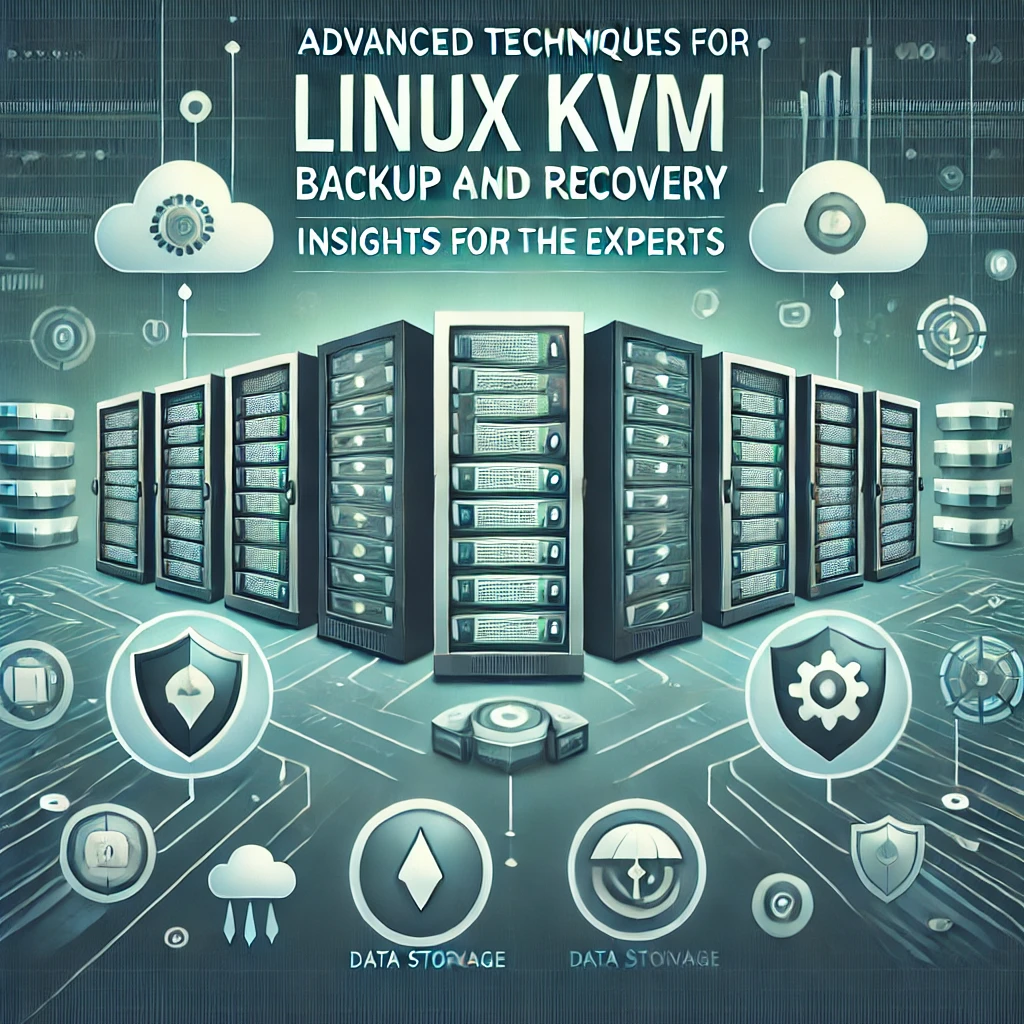Advanced Techniques for Linux KVM Backup and Recovery: Insights from the Experts
 John Highsmith
John Highsmith
As businesses increasingly rely on virtual environments to keep their operations running smoothly, it becomes critical to have a solid backup and recovery plan. If you’re using Linux KVM (Kernel-based Virtual Machine) for virtualization, then safeguarding your virtual machines (VMs) should be a top priority. Whether it’s due to a system crash, ransomware attack, or just an accidental deletion, having a reliable backup strategy can save you from a nightmare of lost data and downtime.
In this article, we’ll dive into practical, real-world techniques to back up and recover Linux KVM VMs, offering expert insights to ensure your business stays resilient in the face of unexpected data loss.
Why Linux KVM Backup and Recovery Matters
Linux KVM is one of the leading choices for companies that need a flexible, efficient virtualization solution. It allows multiple VMs to run on a single physical machine, which helps cut costs while boosting productivity. But with this power comes responsibility. Without proper backups, all your VMs—and the critical data they hold—are vulnerable. If something goes wrong, such as hardware failure or a ransomware attack, your business could face serious downtime or even permanent data loss.
That’s where a solid backup and recovery strategy comes in. Let’s look at how you can protect your Linux KVM environment and ensure that you can recover quickly if disaster strikes.
Expert-Recommended Backup Techniques for Linux KVM
The goal is not just to have backups but to have backups that are reliable, up-to-date, and quickly recoverable. Here are some key techniques:
1. LVM Snapshots for Quick Backups
LVM snapshots (Logical Volume Manager) are one of the most effective methods for backing up KVM VMs. LVM lets you take “snapshots” of your VMs in real-time without turning them off. This means you can keep working while backups happen in the background.
Why use it? LVM snapshots allow for point-in-time backups, ensuring you capture the exact state of your VM without interruption. It’s also efficient for incremental backups—where only changes since the last snapshot are saved, reducing the storage needed.
Expert tip: Automate LVM snapshots to run regularly. You can use simple scripts to schedule and manage these backups automatically, so you don’t have to worry about missing one.
2. Using Backup Tools Like Nakivo
There are several third-party tools specifically designed to make backups in Linux KVM environments easier and more reliable. Nakivo is a popular option that comes with features like incremental backups, cloud integration, and even automatic disaster recovery testing.
Why Nakivo? It streamlines backup and recovery for KVM environments with features like application-aware backups, which ensure that critical apps like databases are backed up consistently. Plus, it allows backups to cloud storage for added security.
Expert insight: Combine Nakivo with cloud storage (like Amazon S3) to ensure that even if something happens to your on-site hardware, your backups are safe off-site.
3. Hot Backups with Libvirt
For businesses that can’t afford downtime, hot backups allow you to back up running VMs without stopping them. You can use Libvirt APIs to take snapshots while the VM is operational.
- Why it works: Hot backups ensure continuous operation, which is critical for businesses that need 24/7 uptime. It’s ideal for those who can’t afford to power down systems just to run a backup.
4. Cloud-Based Backup for Extra Security
Backing up your data to the cloud adds an extra layer of protection. If something catastrophic happens—like a natural disaster or complete hardware failure—your data is still safe and easily accessible from the cloud.
- How it helps: Cloud storage provides scalability and off-site security. Plus, it simplifies disaster recovery since you can restore your backups from anywhere.
5. Automated Testing of Recovery Plans
Creating backups is only half the battle. You need to test your recovery plans to make sure they work when you need them. Some tools, like Nakivo, offer automated recovery testing that simulates a disaster scenario to ensure your VMs can be restored quickly.
- Why it matters: Knowing your backups are reliable gives you peace of mind. Regularly testing recovery procedures ensures that when something does go wrong, you’re ready to respond swiftly.
Recovery Techniques for Linux KVM
Having a good backup is great, but being able to recover it quickly is just as important. Here are a few recovery techniques that will help minimize downtime:
1. Instant Recovery
If you experience downtime, being able to boot your VM instantly from a backup is invaluable. Tools like Nakivo provide instant recovery, meaning your VM can run directly from the backup repository while the full recovery process happens in the background.
- Why use it? Instant recovery minimizes downtime, helping your business stay operational even during recovery. This is especially useful for critical systems that need to stay online no matter what.
2. Granular Recovery for Files
Sometimes, you don’t need to recover an entire VM—just a file or two that got deleted or corrupted. With granular recovery, you can restore individual files or applications without affecting the entire VM.
- How it helps: This saves time and reduces unnecessary disruption when only a small portion of your data needs to be recovered.
3. Cross-Hypervisor Recovery
What if your Linux KVM system experiences a complete failure? Cross-hypervisor recovery allows you to restore your VMs to a different hypervisor, like VMware or Hyper-V.
- Why it matters: This flexibility ensures that even if your KVM environment becomes unavailable, you can still restore your VMs to an alternative platform, minimizing downtime.
Subscribe to my newsletter
Read articles from John Highsmith directly inside your inbox. Subscribe to the newsletter, and don't miss out.
Written by
